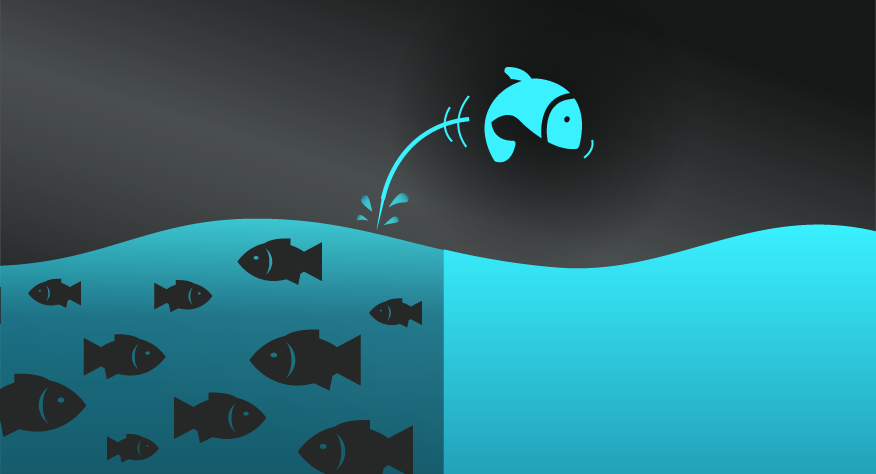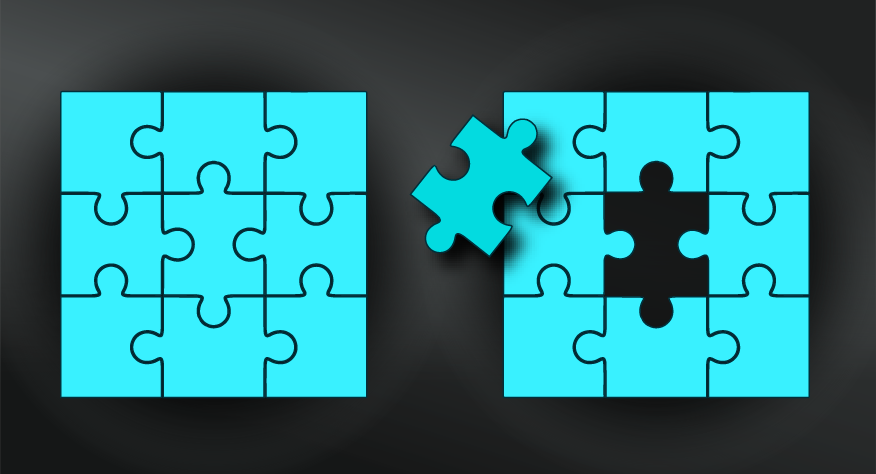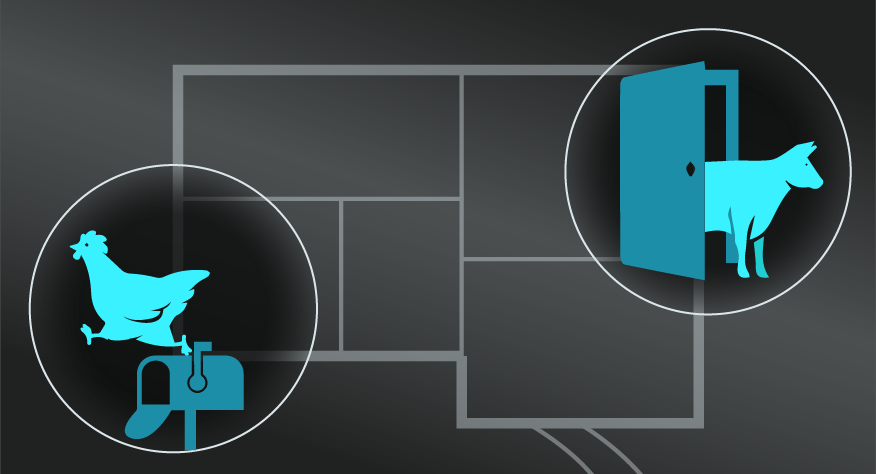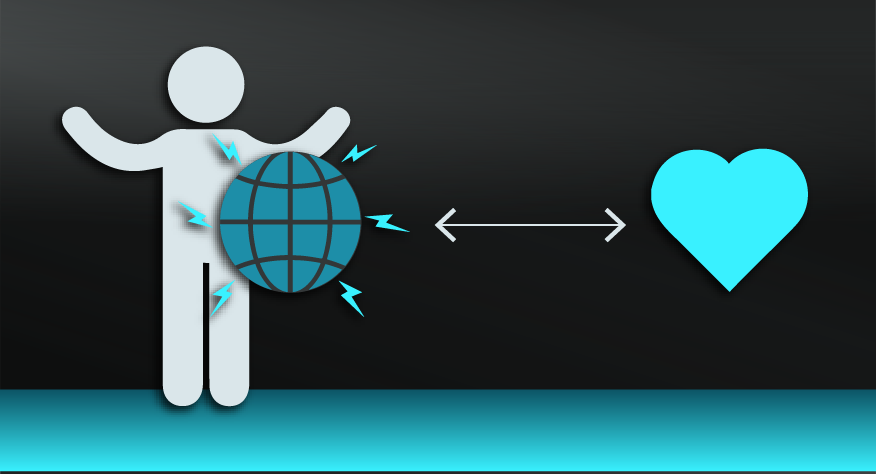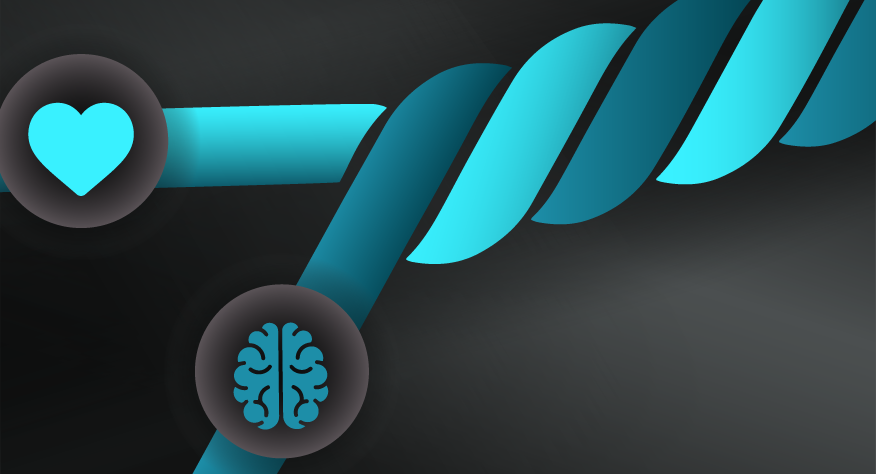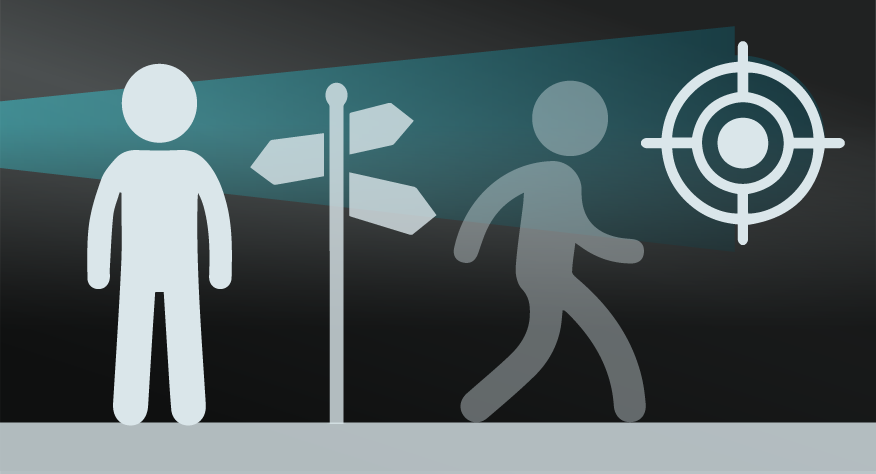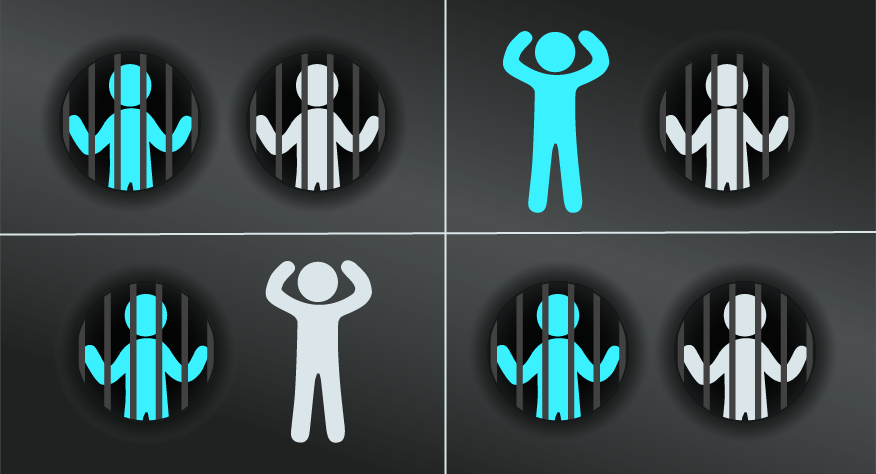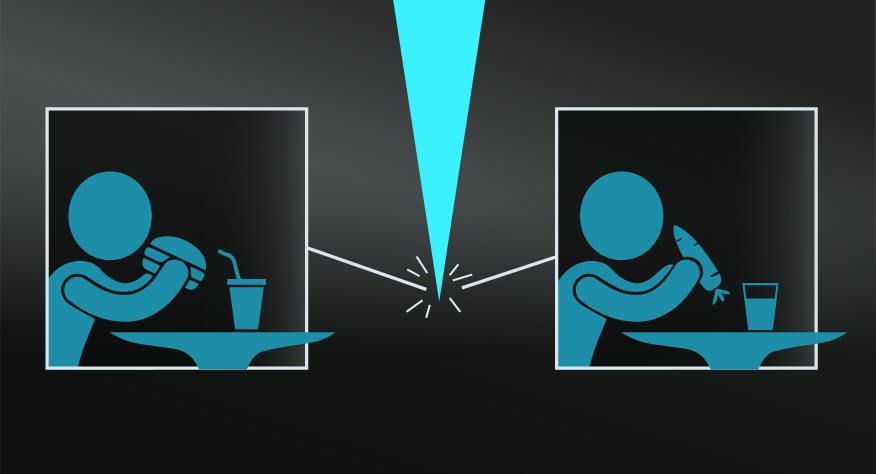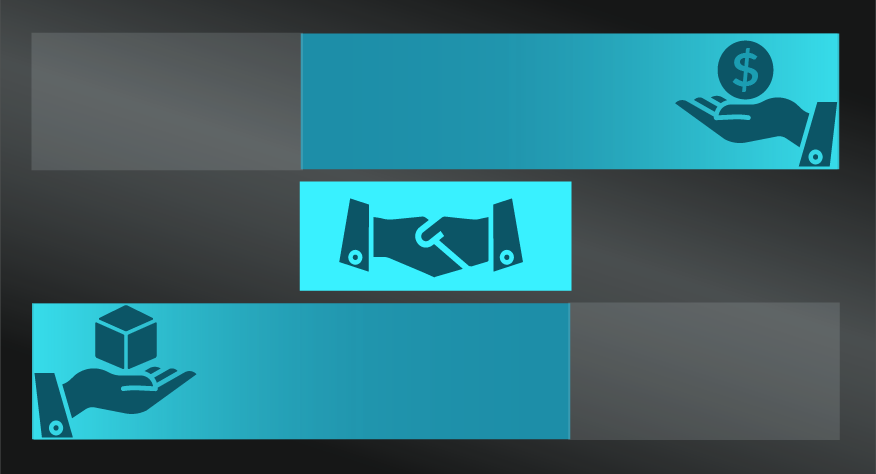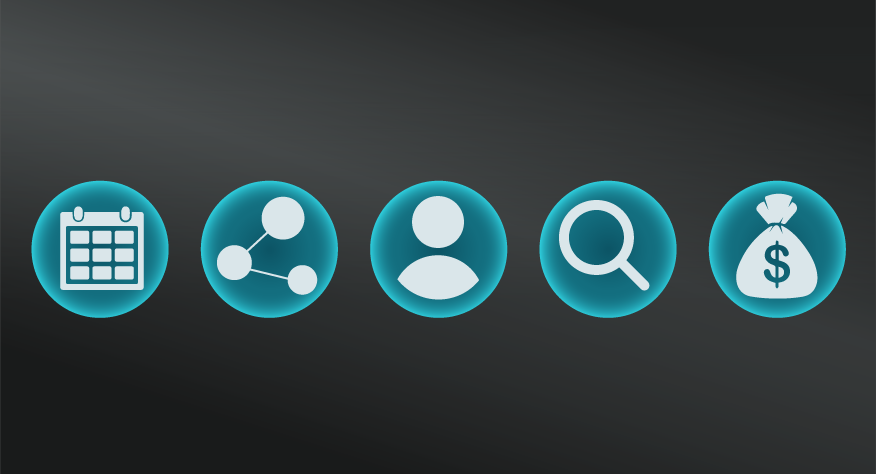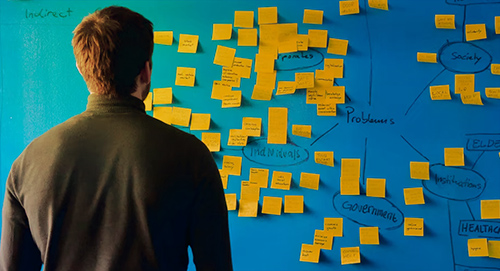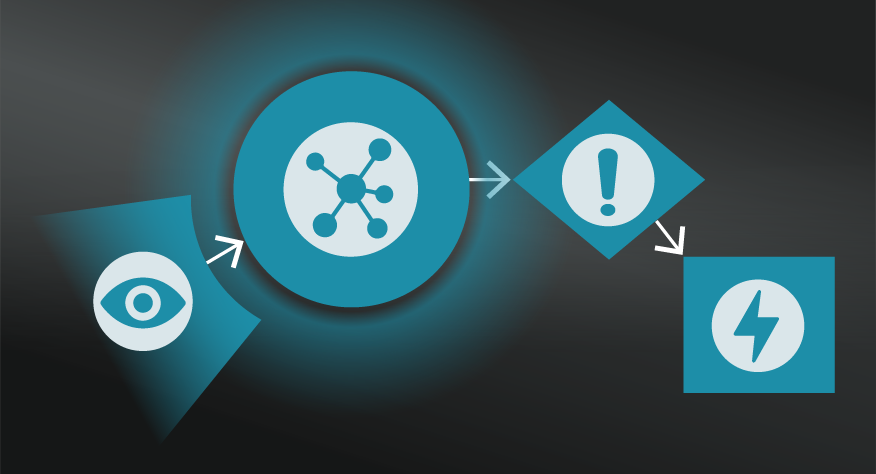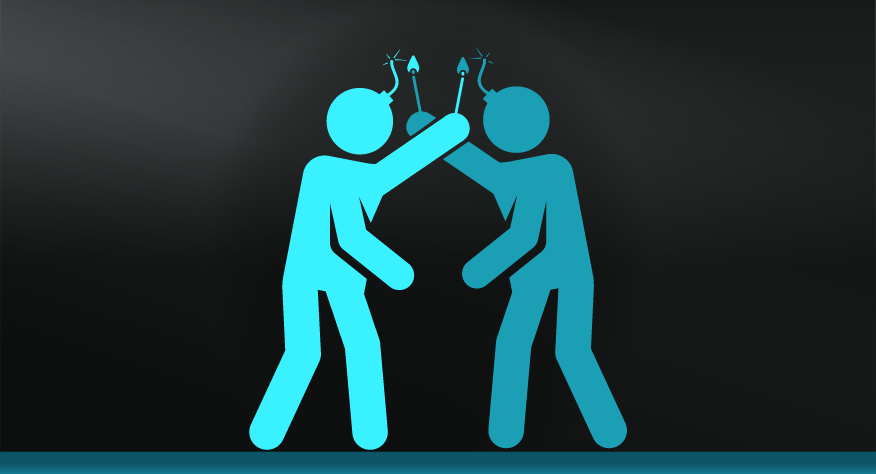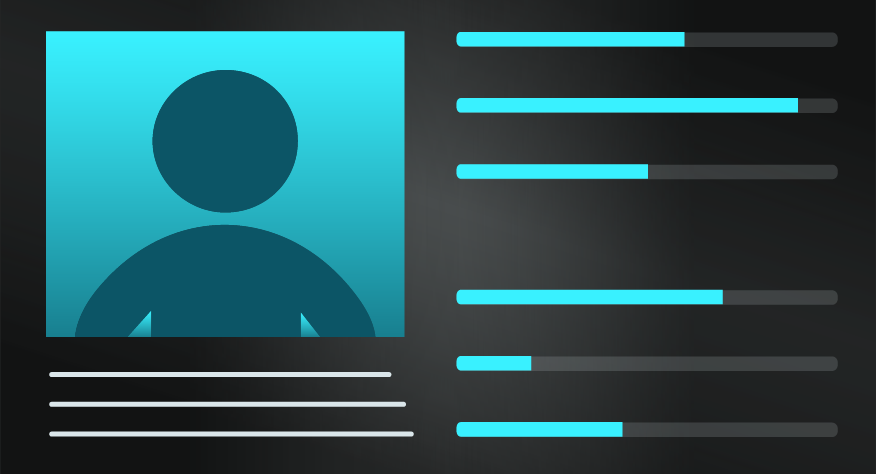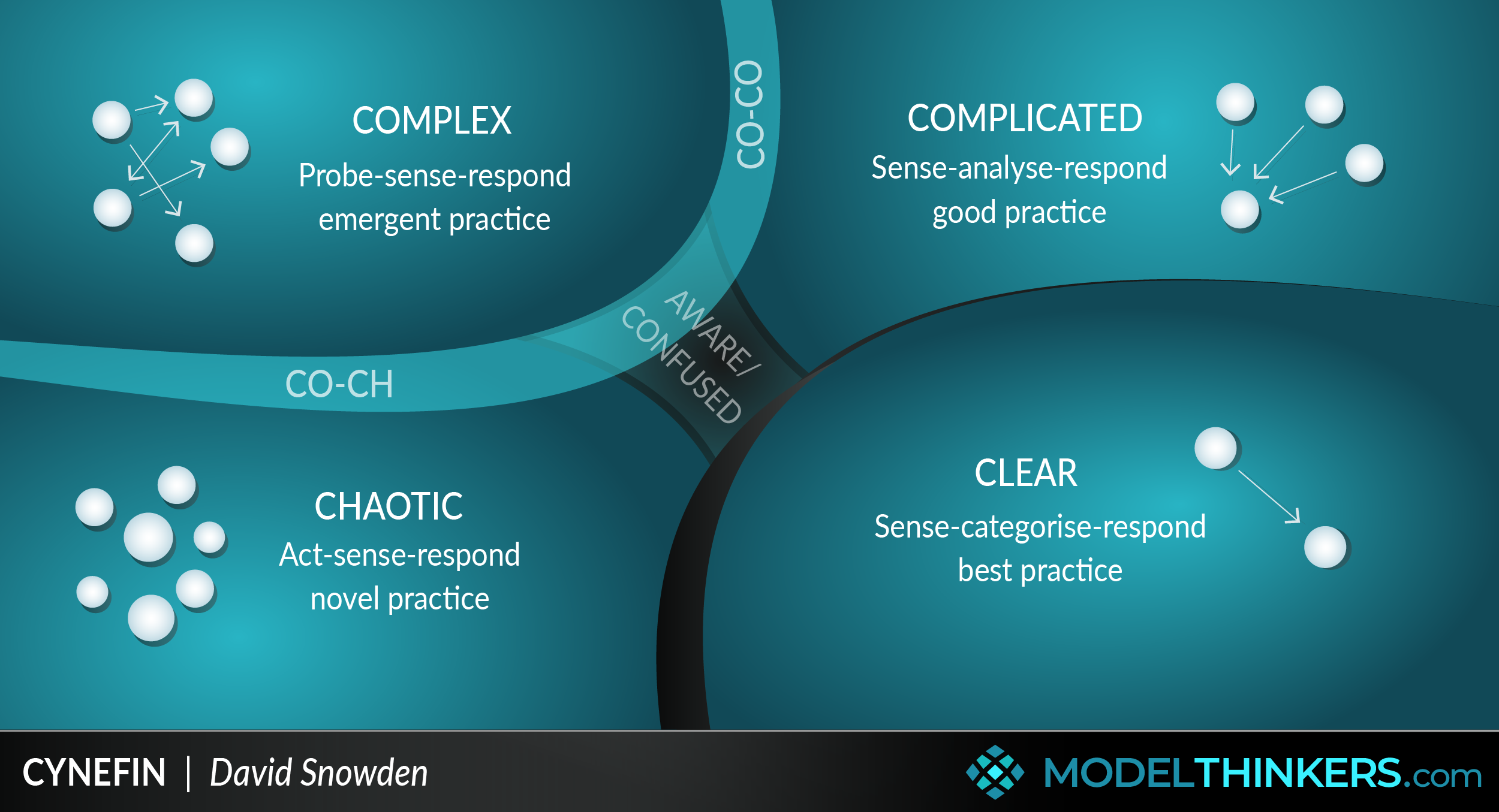
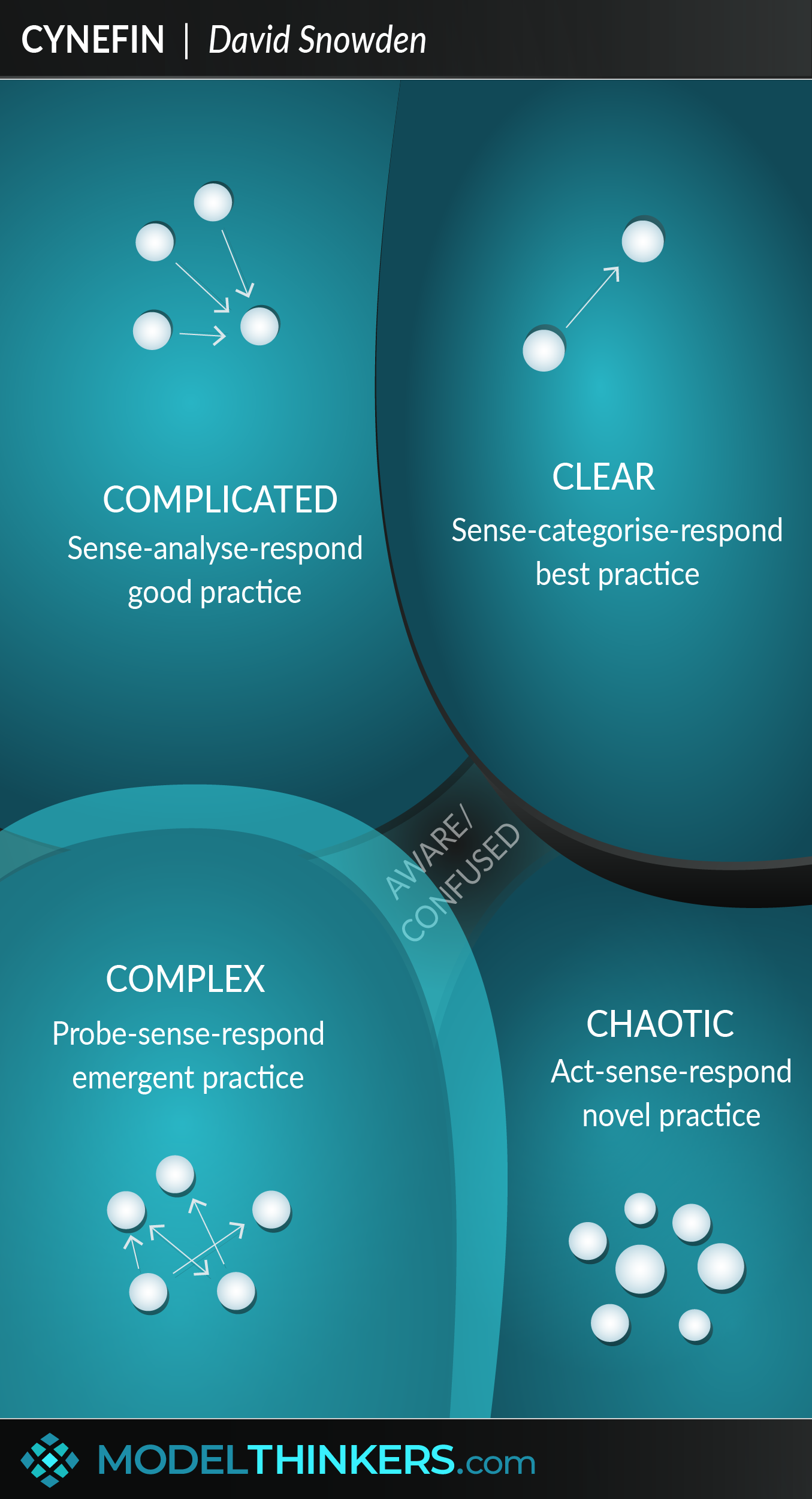
 0 saved
0 saved
 34K views
34K views








ModelThinkers is about better understanding our world and ourselves to take more effective action — and one of the most powerful approaches to that end has to be the Cynefin Framework. Pronounced ‘ku-nev-in’, this brainchild of David Snowden is like a dynamic guidebook for decision-makers.
The Cynefin Framework is a sense-making / decision-making tool that recommends effective approaches to different domains or decision-making environments, namely: clear, complicated, complex, chaotic and confused.
It’s recently been expanded with two additional domains, but we’ll get to that later.
DOMAINS IN MORE DETAIL.
Let’s dive into the domains:
|
Domain |
Characteristics |
Example |
Approach |
|
CLEAR Known knowns. |
Predictable and clear cause and effect relationships. |
Building a series of project homes from a defined and tested plan. |
Sense - categorise - respond. Respond with best practice - the proven way to move forward. |
|
COMPLICATED. Known unknowns. |
The correct answer is not self-evident and multiple options exist. |
Building a custom house using new material and/or in an unusual context. |
Sense - analyse - respond. Analyse good practice - consider multiple experts/ possible options. |
|
COMPLEX. Unknown unknowns. |
Entangled relationships, with dependent, non-linear causality. |
Building the above house for several clients simultaneously, each with different ideas. |
Probe - sense - respond. Probe emergent practice - run parallel ‘safe to fail’ experiments to identify patterns and what works. |
|
CHAOTIC. Unimagined unknowables. |
Effectively random, with no fixed constraints. (insert any letters here) |
Doing the above while the house is on fire, during an earthquake. |
Act - sense - respond. Act with novel practice - to create order, stabilise, and shift to complexity. |
|
AWARE/ CONFUSED Don’t know. |
Yet to be identified. (the letters are covered) |
Any of the above but you don’t know yet. |
Breakdown and assign the parts to the other four domains. |
TWO LIMINAL/ TRANSITIONAL DOMAINS.
In addition, Snowden’s latest iteration of this model introduced two liminal or transitional domains that consist of unimagined unknowns:
- CO-CO: the space between complex and complicated, this particularly uses iterative methods such as agile and scrum to make the complex complicated.
- CO-CH: the transition between complex and chaotic, this might involve consciously loosening connections and constraints to support innovation, for example by organising a range of small teams to create prototypes and possible solutions.
AND BEWARE OF THE CLIFF.
The final boundary of note lies between the obvious and chaotic and, according to Snowden, is more like falling off a cliff than a transition. He warns that such a fall might arise from complacency, assuming order where there is not, and will result in negative and expensive implications.
BEWARE LEADERSHIP GO-TO TECHNIQUES.
Left to their own devices, and when not applying the framework consciously, leaders are likely to use strategies that they are accustomed to explaining any problems or failures. For example:
- Clear: leaders accustomed to predictable and/or bureaucratic environments will assume failures of process.
- Complicated: a deep expert will assume that they need more time and resources
- Complex: leaders in the military or politicians will assume they need collective intelligence of the right people in the room.
- Chaotic: Might tempt leaders who want greater control, and even have fascistic tendencies (no, I'm not going to name names).
IN YOUR LATTICEWORK.
This framework can be used to understand situations and know how to make more effective decisions. It can relate to a number of complex business or life situations and has been applied as broadly as the US government under George Bush to running hospitals.
Cynefin is often referenced by experienced Scrum and Agile Methodology practitioners, particularly in their work through complex challenges. Embracing complexity also lends itself to Probabilistic Thinking and knowing when to apply Deep Work. Beyond those connections, consider working with different applications of the OODA Loop for different domains and find out about George R.R. Martin's metaphor of Architects versus Gardeners which takes a relatively simplistic approach to the concepts behind Cynefin.
Finally, more than perhaps any frameworks that we feature on ModelThinkers — Cynefin really is a living and evolving school of thought. Follow the links in the Origins & Resources tab below to stay in touch with its practice and community via David Snowden's books and initiatives.




- In clear contexts domains, sense-categorise-respond.
These are the linear and straightforward causal relationships, simply leverage best practice options.
- In complicated domains, sense-analyse-respond.
With multiple causal factors at play, apply good practice options by engaging with experts or a range of options.
- In complex domains, probe-sense-respond.
Entangled and non-linear causal relationships, requires parallel experimentations to identify patterns.
- In chaotic domains, act-sense-respond.
A place of stress or innovation, create novel practice and aim to move back to complexity.
The Cynefin Framework has been criticised for being too complicated and difficult to understand. We believe it is simple to pick up at a basic level and even apply in a range of contexts. That said, it is perhaps both predictable and ironic that there is much complexity behind the initial concepts that will take experience and skill to apply well.
Beyond that, the main challenge in applying this framework is to move beyond aware or confused with confidence. That is understanding which domain you are working in at any time and then tracking it to know when that domain has changed.
Planning a children’s party.
David Snowden provides a funny breakdown of planning a children’s party using Cynefin in this short video which is well worth your time.
US & counterterrorism.
The US government under George Bush applied the Cynefin framework through the US Defense Advanced Research Project Agency. It was apparently particularly used in counterterrorism.
The cynefin framework is a powerful sense making and decision making approach to add to your approach.
Use the following examples of connected and complementary models to weave the Cynefin framework into your broader latticework of mental models. Alternatively, discover your own connections by exploring the category list above.
Connected models:
- Agile methodology, scrum and kanban: all build on and have been influenced by Cynefin, and many of Snowden’s presentations are for this community.
- Prototyping and split testing: to consider options in complexity.
Complementary models:
- Think, fast & slow: consider how fast thinking works in clear, but slow thinking is required for complex.
- High velocity decision making: another model for complex and even complicated decisions.
- Probabilistic thinking: to consider options in more complexity.
The Cynefin framework was developed by David Snowden during his work at IBM in the late 1990s as a way to manage intellectual capital within the organisation. Cynefin is a Welsh word meaning ‘habitat’, although Snowden has described its meaning as ‘a place of multiple beginnings’. He was inspired by this term because it spoke to the complex systems with multiple and ambiguous influences. In addition, he has pointed out that “A name which requires a story to explain its meaning avoids confusion or association with existing concepts.”
Snowden continued to develop the approach, and it continued to gather momentum within IBM, culminating in him becoming the founder of the IBM Cynefin Centre for Organisational Complexity in 2002. By 2004 the framework was being used by a network of organisations who had formed the Cynefin Centre, and in 2007 Snowden and his collaborator Mary Boone outlined the approach in this Harvard Business Review article.
During the model's growth, Snowden founded Cognitive Edge in 2005, a consulting firm offering training, workshops and more services to support organisations through complexity using the Cynefin framework and other approaches.
Consistent with his inspiration from natural systems, Snowden continues to evolve his approach, with Liminality being one of the most recent additions. Snowden has also recently launched Cynefin, his new book with signs that others are to follow.
 My Notes
My Notes
Oops, That’s Members’ Only!
Fortunately, it only costs US$5/month to Join ModelThinkers and access everything so that you can rapidly discover, learn, and apply the world’s most powerful ideas.
ModelThinkers membership at a glance:






“Yeah, we hate pop ups too. But we wanted to let you know that, with ModelThinkers, we’re making it easier for you to adapt, innovate and create value. We hope you’ll join us and the growing community of ModelThinkers today.”












